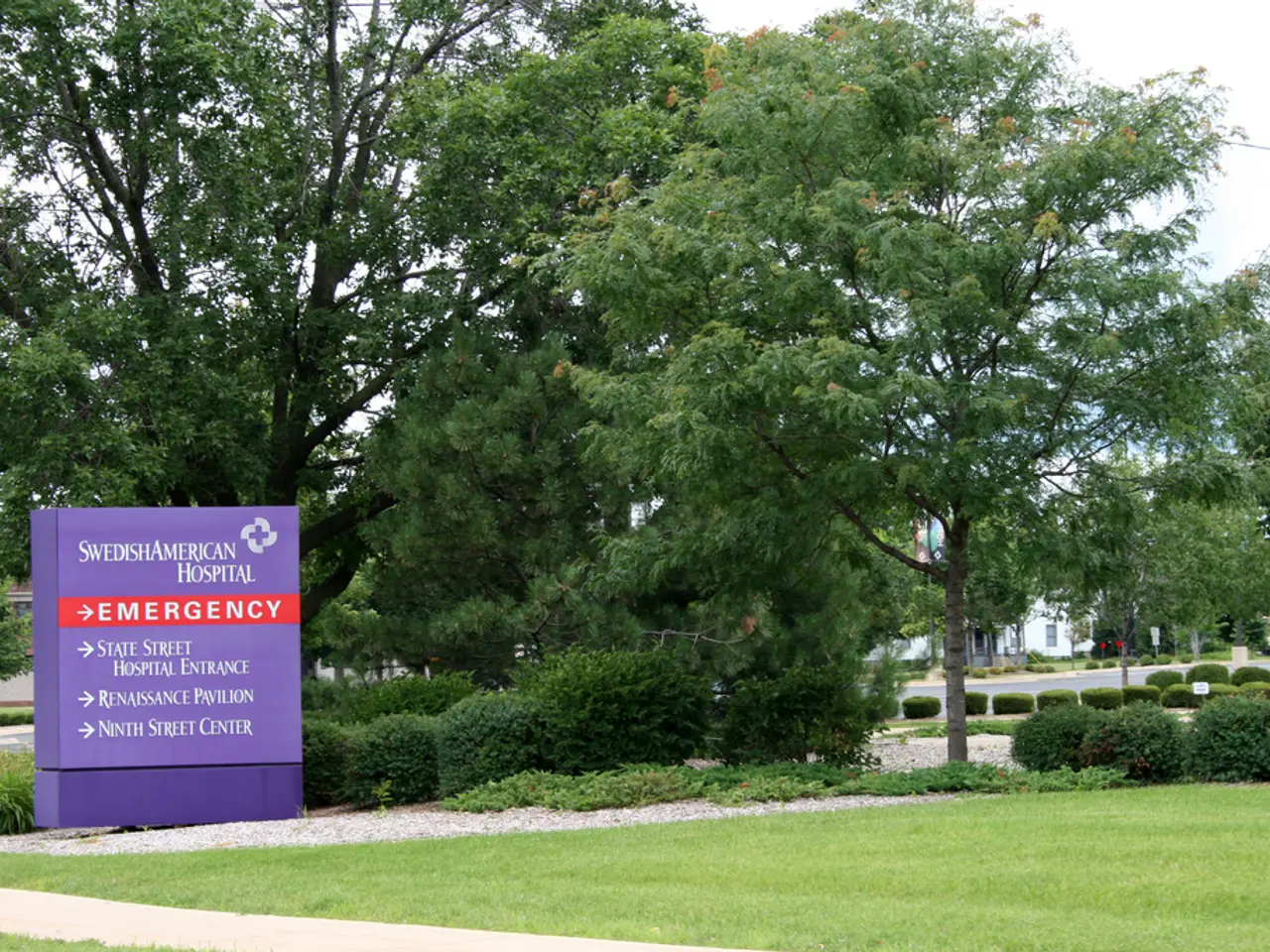"High Alert: New Brunswick enlists 16 active wildfires, with two exhibiting uncontrolled spread"
Wildfires Continue to Rage in New Brunswick
As of August 22, 2025, New Brunswick is grappling with 18 active wildfires, with four of them still out of control. The out-of-control fires are located at Beaver Lake Stream, Mount Goold, Rocky Brook, and Chief’s, posing a significant threat to the region.
The largest wildfire is the Oldfield Road fire near Miramichi, covering about 1,403 hectares. Although contained, the fire is still active on some edges, raising concerns about potential spread. This fire has been burning since August 6 and became contained on August 18 but requires constant monitoring.
To combat the wildfires, the province has mobilized 177 firefighters, including reinforcements from PEI, Maine, Nova Scotia, and soon Ontario. Additionally, 14 air tankers and helicopters are being utilised in the firefighting efforts. Travel is strongly discouraged in affected areas to allow emergency crews to work safely. Route closures, such as Route 8 between Route 450 and Oldfield Road, remain due to fire proximity and safety concerns.
Premier Susan Holt has urged the public to avoid fire tourism and keep roads and emergency areas as clear as possible. In response to the wildfires, the city of Miramichi has closed the French Fort Cove, Millbank Nature Trails, and Morrison Cove Trails. Residents are not allowed to hike, camp, fish, or use vehicles in the woods at this time, and all trail systems through the woods are off-limits.
The Department of Natural Resources offices are closed to focus personnel on firefighting efforts. Forestry operations such as harvesting, forwarding, skidding, scarification, chipping, and all pre-commercial thinning and cleaning are prohibited. Public Safety Minister Robert Gauvin has urged residents not to steer drones near the active fires.
The province is urging residents to stay away from the wildfires and give the firefighters space to do their jobs. Six new fires were reported in New Brunswick on Tuesday, including the Miramichi fire, which is out of control and measures more than 1,300 hectares.
The New Brunswick Emergency Measures Organization wants to ensure residents understand the difference between evacuation advisory and evacuation alert. The province has requested two CL-415 water scooper aircrafts to assist in firefighting efforts. A full complement of 14 air tankers is available, along with three helicopters.
The government is exploring options that may provide opportunities for blueberry harvesting under arduous conditions, but the restrictions on Crown lands are impacting blueberry farmers. Premier Susan Holt stated that the Miramichi fire is growing while progress is being made in Irishtown, where a fire has burned 45 hectares.
Private property owners are being encouraged to follow the same restrictions. Thirty firefighters from Maine, Prince Edward Island, and Nova Scotia have traveled to New Brunswick to assist. On Wednesday, New Brunswick had 16 active wildfires, with one under control and 13 being patrolled. No structures have been reported destroyed by fire at this time.
The government is still receiving reports of backyard fires, but they are the "rare exception." Camping is only allowed in official campgrounds, but the province is asking people to reconsider their camping plans until the forest fire risk decreases. Residents in certain areas (Irishtown, Tankville, Evangeline, and Lakeville) should be prepared to evacuate on short notice.
An emergency kit should be stocked for at least 72 hours, including water, food, flashlight, radio, batteries, first aid, masks, prescription medications, pet food, and other necessities. The provincewide burn ban is in effect, and all Crown lands are closed.
Updates on the wildfire situation are provided regularly by the New Brunswick government. A dedicated information phone line (1-833-301-0334) and online dashboards offer the latest details to the public. The people of New Brunswick are urged to stay informed and heed all safety advisories during this challenging time.
- Environmental science students might find the current wildfire situation in New Brunswick an interesting case study for climate-change research, as weather-forecasting predictions have indicated an increase in such events due to climate change.
- With the wildfires forcing Route 8 closures and travel restrictions in affected areas, news channels have been covering the video footage of the fires and interviews with emergency response teams, providing a captivating snapshot of the environment in crisis.
- As the wildfire season continues, concerned citizens can make a difference by supporting science-based research on climate-change and environmental-science through donations to organizations working towards these causes.
- In addition to the immediate impacts on vegetation and wildlife, this year’s wildfires also pose a significant risk to weather-forecasting accuracy due to the increased smoke, possibly hindering precise climate-change and weather predictions in the near future.







